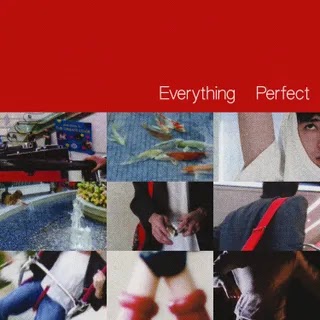Collecting both hits and tangents, this double-disc anthology of Paul Weller’s post-Jam project has a concise narrative punch lacking in 1998’s more thorough box set.
Think of the Style Council’s career as the pop equivalent of a semester abroad: Paul Weller embarked on this journey with the explicit intent of broadening his horizons. He had grown tired of the Jam, the trio that he had led since he was 14, ushering them through the frenzied days of punk and leading them to the top of the UK charts. The Gift, the trio’s last album, was sitting at No. 1 when he decided to pull the plug in 1982, believing there was nothing left for them to conquer. He chose to put childish things away and act like an adult for the Style Council.
Weller enlisted Mick Talbot, a keyboardist who previously played with Jam disciples the Merton Parkas, as his lieutenant, but it was clear from the outset who was in charge. In the video for 1983’s “Long Hot Summer”—their third single and the song that lends its title to this new anthology—Talbot spends his time rowing a bare-chested Weller to a riverside picnic; later, Tabot would literally carry Weller’s bags in the clip for “Boy Who Cried Wolf.” Absurd as the images may be, there’s an endearing playfulness to the videos that’s telling. Weller scowled through most of the Jam, adopting the look intense young men wear when they’re seriously making serious music. Here, he’s cavorting shirtless, so carefree he’s nearly camp, embracing the hint of sexual ambiguity with the same gusto with which he has a beatnik bongo player join their party.
Signifiers were a big deal for the Style Council. The group’s first single, “Speak Like a Child,” shared a title with a 1968 Blue Note LP by Herbie Hancock; they designed the album cover of 1985’s Our Favourite Shop so that it spilled over with the books, fashion, music, and film they cherished most. They swapped punk and mod for jazz and soul as musical touchstones, and the group expanded this obsession through the ’80s, incorporating house and garage to an extent that their record label rejected their final album for veering too far into the dance-music realm. The mysterious, uncredited Cappuccino Kid—widely believed to be Paolo Hewitt, a confidant and biographer of Weller’s until they had a falling out in the 2000s—penned righteous manifestos for the band’s liner notes. They embraced political activism, fighting against prime minister Margaret Thatcher with such enthusiasm it nearly consumed them.
Members of the Style Council—Weller and Talbot officially constituted the group’s lineup, but they retained a fairly stable set of players through the years—later blamed the band’s prominent position on the anti-Thatcher Red Wedge tour in 1986 as halting their momentum. But Long Hot Summers: The Story of the Style Council underscores that they were a band born of the moment who lived for the moment, and that moment had passed by the time the ’80s were half finished. Long Hot Summers differs from the many, many Style Council compilations released over the years by being co-compiled by Weller as part of a Style Council reclamation project that also includes a documentary film for Sky Arts (the movie is rumored to be headed Stateside sometime next year).
In one sense, assembling a Style Council collection isn’t all that hard, since the high points often occurred on singles. During their peak early years, the band gravitated toward singles and EPs over LPs, so their most vibrant music happened here, while the scattershot later albums usually are well represented by their hits. What happens in the margins of Long Hot Summers makes a difference, though. At two CDs (or two LPs), it has room to cover adventures a single-disc hits collection doesn’t, and it has a concise narrative punch lacking in the thorough 1998 box The Complete Adventures Of The Style Council. The extra space here affords the opportunity to underscore how the band directly tackled big societal and political issues: They wrote a swinging jazz number called “Dropping Bombs on the Whitehouse” and delicately urged that the “Ghosts of Dachau” not be forgotten, a sentiment that may hit harder in the authoritarian climate of 2020 than it did in 1985. Unlike so many of their British post-punk peers, the group also didn’t hesitate to absorb the changes brought by ’80s R&B, adapting elastic synth bass and drum machines for their own ends and gamely covering Joe Smooth’s house classic “Promised Land."
At this generous length, the inherent earnest gangliness of the Style Council is readily apparent. Often, the band came across like they had raided their big brother’s closet, trying on suits that didn’t quite fit their frame. Their funk can be stiff, the jazz drifts toward cocktail hour, and they dive into dance without quite knowing whether they can pull off the new sounds. But all this awkwardness is endearing, not alienating. It’s done in the service of self-edification, for one and for another. Weller really did learn several new tricks during this period. He wound up absorbing the impassioned smooth soul of Curtis Mayfield, a progression evident on “Walls Come Tumbling Down!” and “Shout to the Top!”; he learned how to write with a lyrical lightness, a quality that still makes “Long Hot Summer” and “My Ever-Changing Moods” incandescent. He’d retain this nuance as he headed out on his solo career, but the Style Council stands as its own distinctive thing, the crystallization of a moment when the possibilities pop culture offered to a curious and attentive artist seemed endless.









%20Music%20Album%20Reviews.webp)






0 comments:
Post a Comment